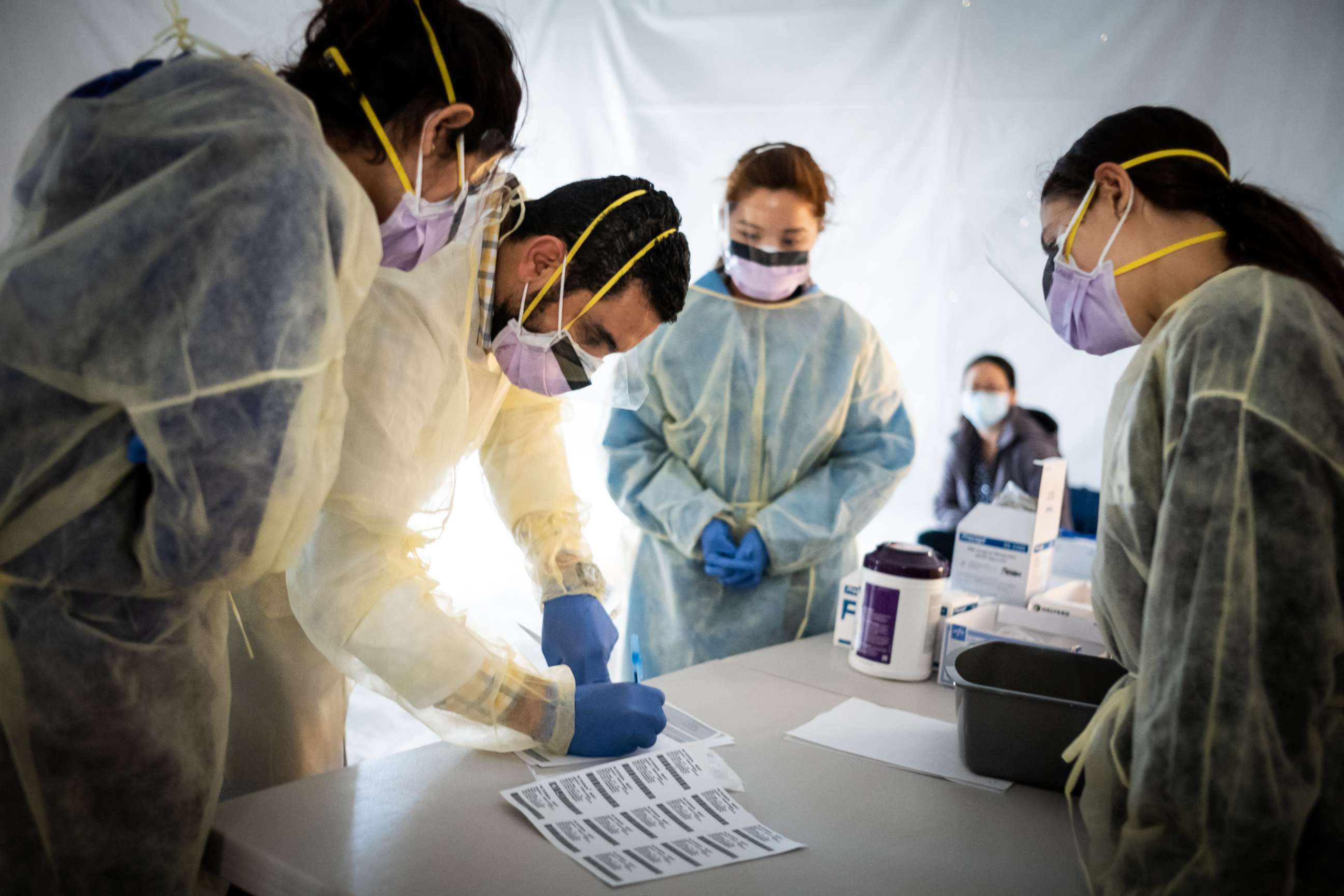Tsunami or ripple? Forecasting the 2nd wave of coronavirus
Public should understand, "recipe for their personal safety has not changed..."
As some states see declining COVID-19 cases and gradually reopen, infectious disease experts warn that a second wave of COVID-19 is inevitable, though the extent of the resurgence remains unclear.
The "second wave" of a pandemic refers to a recurrent rise of infections following an overall decline in spread from the initial cluster of cases.
Some fear that easing restrictions and public disregard for preventative measures as time passes may make the second wave of cases greater than the initial burst.
"I think people mistake the idea of society reopening with the idea that society is safer, but things are no safer today than they were weeks ago when we were in full lockdown," said Dr. Lawrence Kleinman, MD MPH of Rutgers University.
"It's really important for the public to understand that the recipe for their personal safety has not changed and is not changing even as society opens up. I worry that we are going to see that the more social interactions occur, the less care people will take, the more illness there will be, and the more people who will get very sick and die."
Some experts worry if current efforts of distancing, masking, hand-washing and screening for symptoms aren't maintained, larger numbers cases are likely, which may require many cities to reimpose self-quarantining polices.
Others are more optimistic. Dr. Vincent Racaniello, a Columbia University virologist, said, "I'm hoping we can continue our lives without having to go back into quarantine in the fall, because we've learned that distancing and face masks can really make a difference."
Regardless of where experts stand, they agree that following public health measures will play a key role in determining the severity of the second wave.
Dr. Ashish Jha, general internist and director of the Harvard Global Health Institute, said ramping up testing and contract tracing is essential. "Certainly if we go into the fall with the number of tests we have right now, we're going to get crushed. Because the biggest thing in curtailing this disease is that you've got to be able to identify who's infected and separate them from others so that they don't spread the virus."

Some experts are hoping to peer into the future by looking back at the behavior of past outbreaks with different respiratory illnesses. For example, the cyclical nature of influenza and the common cold seem to be linked to the weather, thriving during the colder months. The same holds true for other types of common, seasonal coronaviruses, and may also apply to SARS-CoV-2, the virus that causes COVID-19.
"In the cooler months with lower humidity, the virus transmits better so we see outbreaks of respiratory infections in those times. I think that's what COVID-19 will be like in the fall," says Racaniello.
Spending more time indoors during the colder months may also exacerbate viral transmission. According to Jha, "There's pretty good evidence that a lot of the transmission of this virus occurs when people congregate indoors. And as schools come back along with universities and workplaces, we're all very worried we're going to see big spikes in cases that nationally will result in a second wave."
Some experts voice concerns that COVID-19 resurgence coinciding with flu season may wreak havoc and overwhelm the health care system. But Racaniello said he is less worried. "I think most health care systems in the U.S. have experienced the outbreak, they know how to handle it, they are going to be ready because now we're talking about a number of months where they can prepare, they can get protective equipment, they can reallocate spending, space and ventilators."
While many believe COVID-19 will be around for years to come, the hope is that vaccine development may allow for immunity to build over time, allowing the virus to fade into the background like the common cold. Racaniello says it's possible that infections will continue to occur, but will become very mild over the years once there's widespread use of an effective vaccine.
Experts interviewed by ABC News were not overly concerned that the virus will mutate in a way that would interfere with how a pending vaccine may work.
"I'm not worried that there's going to be a meaningful mutation that will lead to the disease becoming much more severe," said Jha. "We'll obviously be paying very close attention to that and we have much better tools for looking at viral genetics, we didn't have any such tools 100 years ago. Of all the things I lose sleep over, this isn't one of them."
Dr. Karin Michels, Ph.D., and chair of the UCLA Department of Epidemiology, said that even with tools to prevent a second wave, it may be difficult to encourage a weary American public to continue extreme social distancing.
"It is in our hands and we have all the knowledge required to keep this second wave low, but the relevant measures are unpopular, difficult to maintain and affect many aspects from economy to quality of life," Michels said.
COVID-19 will be part of the foreseeable future, but the choice of whether a second wave will be an overwhelming tsunami or merely a ripple may hinge on continued masking, physical distancing, widespread testing with contact tracing, hospital preparation and vaccine development.
Jessica Johnson, M.D., is a senior resident in emergency medicine at Stanford University and contributor to the ABC News Medical Unit.




